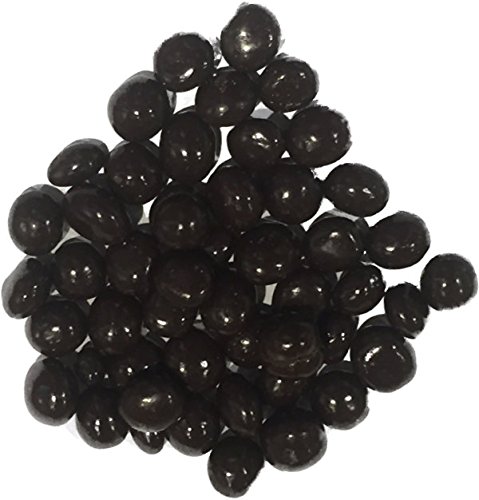The Most Hilarious Complaints We've Heard About Types Of Coffee Beans

Types of Coffee Beans
Behind every cup of coffee we enjoy, are carefully graded beans. The beans are evaluated according to their size as well as color, shape, and density.
The AA grade is awarded to coffee beans that meet the criteria mentioned above, with the exception that they are not allowed to contain more than 3 defects (quakers). Most often, these are Kenya AA beans.
Arabica
Arabica coffee beans, also referred to as Coffea arabica, are the most popular type of coffee beans in the world. According to legend, coffee was discovered by an Ethiopian goatherder Ethiopia after he noticed that his herd was more full of energy when they ate the fruit of the plant. This inspired him to experiment with roasting seeds and brewing them, making the drink that we drink today.
Although a variety of coffee plants are available, there are only two major species used as the foundation for all our favorite beverages: robusta and arabica. The flavor of the final drink is typically better when you drink the earlier.
There are a variety of arabica cultivars. Each has its own unique taste profile. Typica and Bourbon are two of the most sought-after arabica cultivars. All other arabica cultivars were developed from these two varieties either through natural mutations or intentional crossbreeding. Scott Labs developed the SL28 cultivar in Kenya which is famous for its distinct chocolaty flavor.
The taste of an arabica variety depends on the environment in which it was planted, and also how it was handled and cooked. The type of shade that a tree receives can have a significant effect on the final product.

Robusta
Robusta coffee beans (Coffea canephora) are the second most well-known variety of coffee. They are commonly used in instant coffees, and they contain twice as much caffeine than Arabica Coffee Beans. They are also used in a variety of espresso blends, especially for caffe latte and cappuccino.
Coffea Canephora is a plant that originated in Sub-Saharan Africa. It has been grown all over the world since then. coffee bean suppliers near me can grow at lower altitudes and can tolerate higher temperatures than the Arabica coffee plant, which makes it a more convenient crop for farmers. Vietnam is currently the largest producer of robusta coffee followed by Brazil and Indonesia.
The robusta plant is a good coffee however it's not popular with cupping enthusiasts because of its bitter taste and burnt-rubber aroma. It is often considered an inferior coffee and many large coffee producers employ arabica beans for their top-quality products.
The demand for premium coffees is growing and small roasters are also experimenting to capitalize on its outstanding qualities. Our Valhalla Java and Death With Coffee are two examples of exceptional robusta coffees. They are blended with arabica to give the perfect balance of flavor and strength. These are coffees from Uganda, a country where robusta is a staple of the coffee industry for many years. Read more about these coffees.
Liberica
Liberica coffee beans are rare varieties that are rarely used in the world. They comprise less than 2% of worldwide coffee consumption. They are often overlooked because they don't contain the same amount of caffeine as Arabica and Robusta do. These beans have a unique flavor that a lot of coffee drinkers find appealing.
Despite being extremely scarce, Liberica coffee beans are still very popular in many parts of Asia. These beans are most common in Malaysia and Indonesia where there is a huge Muslim community. The coffee industry in these countries has always been extremely strong and a cup of joe after prayer is part of the tradition.
The background of Liberica coffee began in the 1890s when a worldwide epidemic of coffee leaf rust destroyed the majority of the world's arabica crop. This caused coffee producers to search for a more resilient plant that would thrive in tropical climates. They soon found the Liberica.
Liberica plants have a high tolerance for diseases and pests making them an ideal substitute for the ravaged arabica crop. Liberica also has the ability to grow in hot temperatures and lower altitudes. This allowed it to flourish in the climate of Southeast Asia. Liberica beans are the main ingredient in the production of the coffee in the Philippines and Indonesia.
Excelsa
While it's not usual for coffee drinkers to find excelsa beans in their cups, these unique beans are gaining recognition for their distinctive flavor. According to Komal Sable of South India Coffee Co. who is a fifth generation farmer of coffee excelsa beans have a similar teardrop-shaped shape, however they are smaller. However, despite this family resemblance it is important to remember that excelsa is technically not a distinct species.
So, it's bit hazy as to the best way to classify excelsa beans. classified and it's this confusion that has been the reason for the beans' absence in the world of coffee. Many roasters, farmers, and brewers have no idea how to properly cultivate and use these beans.
In the end, it's up to the individual to decide if they like the taste of excelsa coffee and it could take a amount of time to find a blend that suits their tastes. It is important to be open and test every type of coffee until you've discovered the one that you like. If you do this you'll be able to experience the full potential these unique beans can provide. It's a trip that's worth the journey.
